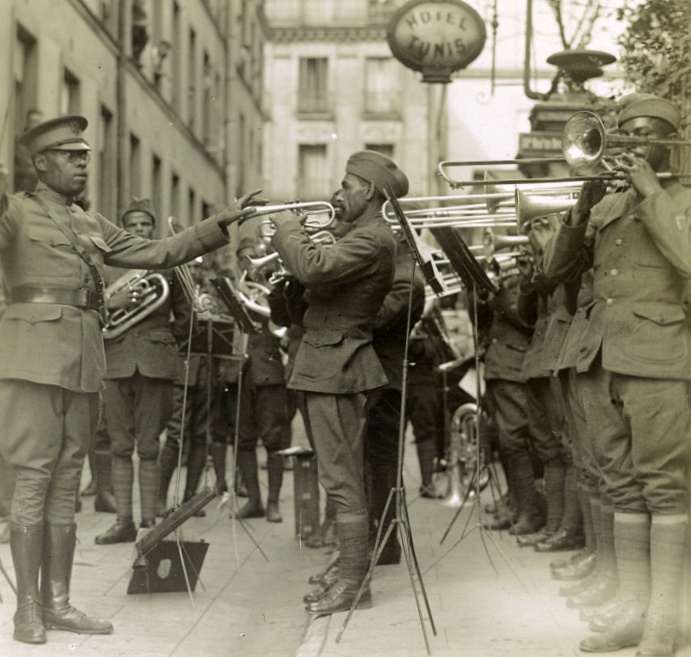Authors:
Historic Era: Era 7: The Emergence of Modern America (1890-1930)
Historic Theme:
Subject:
Fall 2018 - World War I Special Issue | Volume 63, Issue 3


Authors:
Historic Era: Era 7: The Emergence of Modern America (1890-1930)
Historic Theme:
Subject:
Fall 2018 - World War I Special Issue | Volume 63, Issue 3

In the afterglow of the armistice in 1918 that ended World War I, Europe, and particularly the city of Paris, exhibited a wild exuberance. In mid-January 1919, American Expeditionary Forces officer and future civil rights pioneer Charles Hamilton Houston encapsulated the mood and sounds of European joy: “Paris is taken away with jazz and our style of dancing,” he wrote in his diary. “The girls come after the boys in taxis and beg them to go to the dance. Colored boys are all the go.”
World War I brought many changes to the world, jazz not least among them. Some historians characterize it as America’s greatest cultural gift to the globe. It emerged not only as the favored soundtrack of the war, but also as a burgeoning cultural force for nascent, albeit halting and incomplete, integration.
A new exhibit at The Library of Congress, “Echoes of the Great War: American Experiences of World War I,” demonstrates how African-American regimental outfits—such as E. E. Thompson’s 368th Regimental Band; George Dulf’s 370th Infantry “Old Eighth Illinois” Regiment Band; and, most famously, James Reese Europe’s 369th Regimental Band—came to define and spread the new musical form across continental Europe.
James Europe’s band consisted of African-American jazz musicians such as Noble Sissle, but also over a dozen Puerto Rican players recruited by Europe himself from the Caribbean island. Some of its earliest performances overseas occurred at the health resort Aix-les-Bains. A world-famous destination frequented by the likes of J.P. Morgan, during the war it served as a site for recovering Allied soldiers, replete with hot springs, ancient Roman ruins and French and Italian architecture. Here Europe’s band regaled recovering troops with jazz compositions.
“From the very first afternoon concert, when they opened with ‘Over There’ and the war-weary American soldiers responded by climbing on tables, shouting, waving their caps, and demanding that it be played again and again, the band was a great hit,” writes historian Reid Badger in his biography of Europe.
The band made waves with French citizens, too. On its way to Aix-les-Bains, it entertained a local town. The bandmaster’s baton “came down with a swoop that brought forth a soul-rousing crash,” recounted band member Noble Sissle. “[T]hen, it seemed, the whole audience began to sway. . . . The audience could stand it no longer; the ‘jazz germ’ hit them, and it seemed to find the vital spot, loosening all muscles.”
Recording of James Europe and Noble Sissle playing "All of No Man's Land is Ours
This scene played out across France, pulling in European and American audiences alike. Troop trains “carrying Allied soldiers from everywhere,” passing the 369th, took in the sounds as “every head came out the window